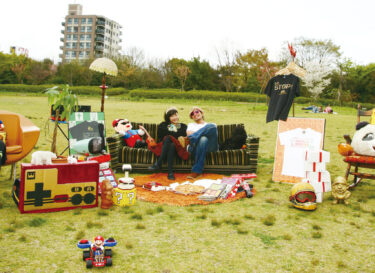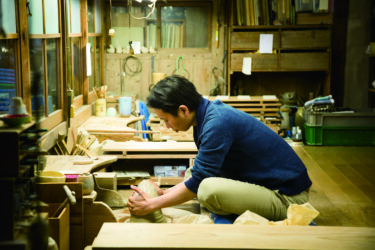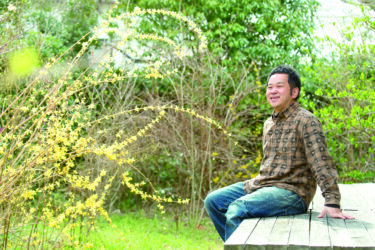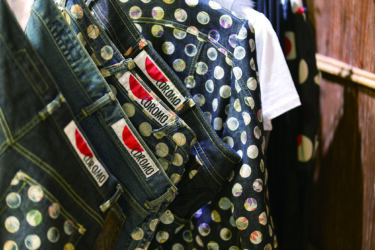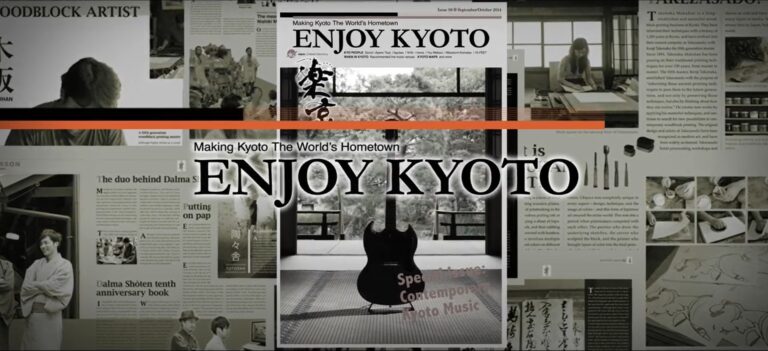The story of an ordinary guy who became a mario bros. licensee.
In February this year, the gaming world was shaken by the news that video game giant Nintendo, which thanks to its game franchises such as Mario Bros. and The Tale of Zelda boasts hundreds of millions of fans around the world, was opening up licensing of some of its most popular characters. Soon after this, Nintendo announced a tie-up with Mercedes-Benz, which resulted in commercial featuring human versions of Mario, Luigi and Princess Peach that became a worldwide YouTube hit.
However, this wasn’t the first time Nintendo characters had been let out of the box. Fifteen years ago, a business based in Nintendo’s hometown of Kyoto became the first and only enterprise to be granted official license to use Nintendo characters and logos. The name of the group is Editmode. How did this tiny company, which specializes in casual wear such as t-shirts and hoodies, manage to convince a huge global corporation to give them permission to use their characters? Here now is the story of a fan who chased his dream to get a ‘Mario Bros. license.’
editmode: before the dawn
Masa’aki Enami was born in 1974, in the town of Omi-Hachiman in neighboring Shiga Prefecture, and lived there until graduating from high school. His first of many game obsessions was Nintendo’s Game & Watch, a portable game console first marketed in 1980. This was the start of Enami’s deep and lifelong association with video games. A few years later, Enami found his next great love- the Nintendo Entertainment System console, known in Japan as the Famicom. He remembers the first time he came across one.
“My brother went over to our cousins’ house to play one day, and when he came back he couldn’t stop talking about this new and rare Famicom thing they had. “It’s awesome!” he kept saying, “Dad, you’ve got to get us one!” So Dad went to the department store to buy us one, but they were so popular that they were all sold out. All right, let’s get a different one, I say, but my brother bursts into tears. “No way!” he screams. “It’s got to be that one!” So that day we ended up ordering one and going home with two game cartridges; Donkey Kong and Mario Bros. It’s funny. Looking back now, if my brother hadn’t kicked up such a stink, we might not have bought a Famicom, and I might not have got caught up in the world of games that way I did.”
After a childhood in which he spent as a complete ‘Game Boy’ Enami heading off to a vocational school in Osaka to study graphic design at age 18. After graduating, he was hired as one of the first staff members of the now-legendary Kyoto apparel store Loftman1981. At the time, one of the store’s slogans was ‘making each of our staff’s dreams come true.’ Enami decided to fuse his two passions of gaming and fashion, and created the in-house label called The King of Games. For a time, having his own brand was no more than a hobby for Enami.
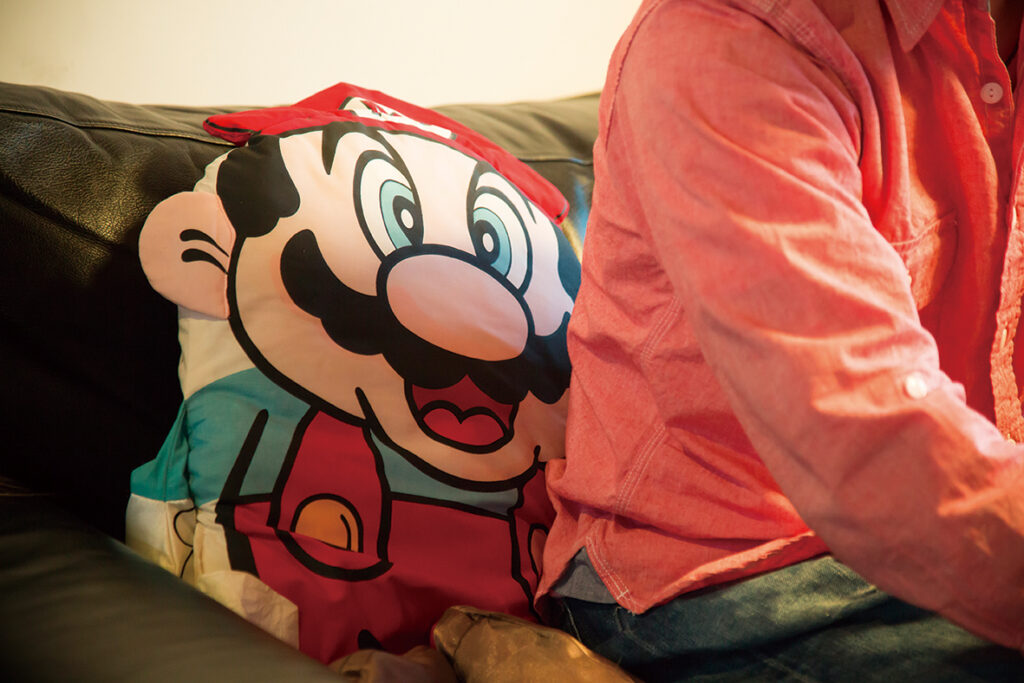
However, at age 25, he was one day visited by a customer who would change his destiny. The customer was wearing a t-shirt bearing the Nintendo logo. Enami commented on the shirt, and asked where he might be able to buy one himself. The customer answered that unfortunately, these shirts were not sold anywhere. The man was in fact an employee of Nintendo, and his shirt was an official version made by the company for use at events. Enami was crestfallen. But then he had an idea. “Why don’t I just make one myself?” he thought. Enami was optimistic. He also had youth and energy on his side. Under the rather naïve credo of ‘if it doesn’t exist, make it”, Enami began his Nintendo shirt project. The next time the Nintendo employee visited the store, Enami was waiting. He exchanged business cards with the man, and outlined his idea. Fortunately, he seemed to like the concept. Enami, still rather inexperienced, believed that this was his ticket to producing Nintendo shirts.
But reality hit hard. Upon calling the number on the man’s business card, he discovered that his customer worked in the game development division, and so had no hand in licensing products. So for the moment all he could do was get in touch with the PR department, and promise to visit the company at a later date.
However, upon visiting Nintendo the story was different.
Enami had prepared Nintendo logo t-shirts in a number of colors with the intention of producing them as a series. He was told straight out that products bearing Nintendo logos could only be produced by Nintendo, with no exceptions.
As it happened, there was a new game just released at that time called Animal Crossing, and the company asked if he would be interested in developing products related to that game. But that wasn’t really what Enami was envisioning, and he let them know. He showed them his sketchbook of designs, and the notebook of ideas that he carried everywhere with him, and this got their attention. “How about you develop these ideas a little more, and bring them back to us?” they proposed. Encouraged by this, Enami decided to show Nintendo just what he was made of.
Making an officially licensed product wasn’t as easy as he had thought. Proposal after proposal was rejected without even leaving the drawing board. This was probably because Enami’s designs were so radically different from anything else at the time. Fifteen years ago, most character design t-shirts were rather simple designs on pre-made shirts, for ease of mass-production. Nintendo was no exception, making its t-shirts and other products by simply transferring existing print of a character onto the product.
Enami, however, thought of himself as not only a fanatical video game fan, but also a fashion designer. His goal was clear but daunting- to create video game-themed t-shirts of designer-level quality. Quality that should be insisted on not only in the creative designs, but also in the materials and stitching of completely original items.
© Nintendo
Dot-pixel Mario: Enami’s game-changer
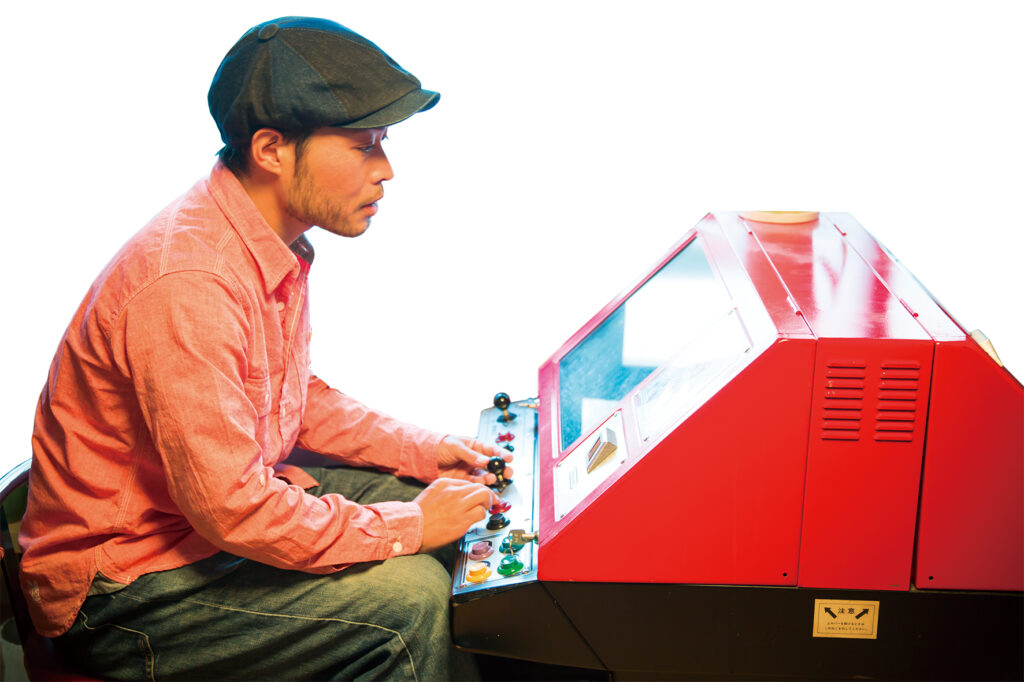
The idea of Enami’s that finally came to fruition was the so-called ‘dot-design Mario.’ At the time, Mario, perhaps Nintendo’s most famous character, was celebrating his 20th anniversary, and Enami was planning a product to commemorate this. Nintendo wanted a regular 2-D print of Mario, and stressed this quite adamantly. Enami, however, with his gamer’s perspective, wanted to depict Mario the way his generation had seen Mario on the screen- in bold pixelated dots. He explains, “For all of us gamers- this was the real Mario, the one we loved and were used to seeing. But convincing the company that that was the way to go was hard work.”
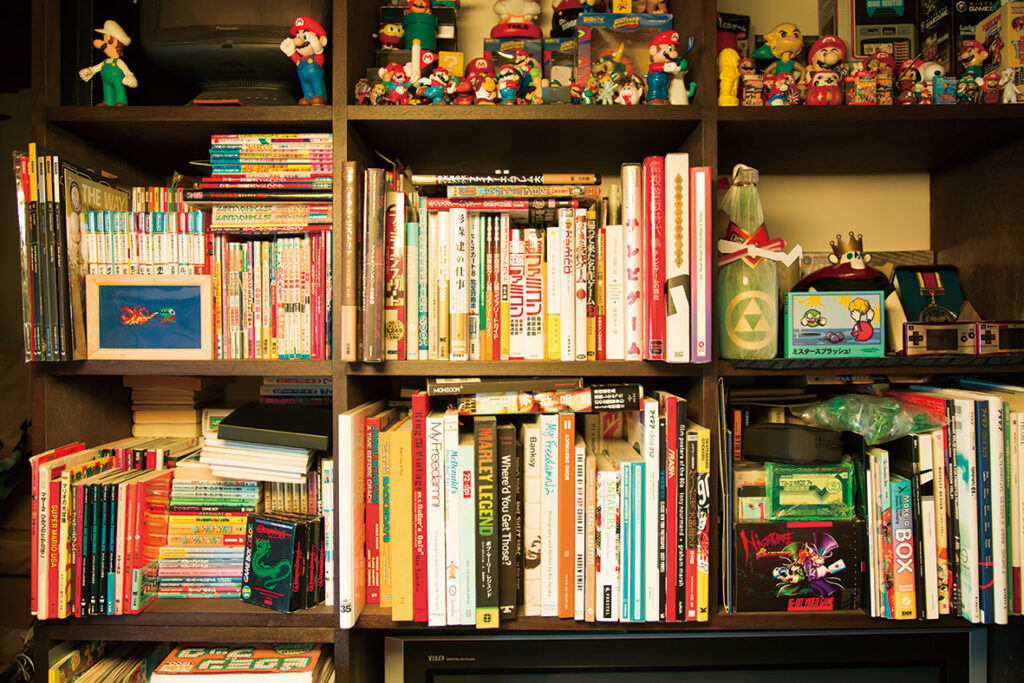
These days retro-style pixelated characters are quite commonplace on clothes, but when Enami put forward his idea no one else had thought of doing it. No precedent meant that there was no model to work from, so Enami had to create the designs completely from scratch, assembling the printed color palette by looking at actual screen colors. This was the beginnings of Enami’s online store, The King of Games. It was 2002, almost two years to the day since Enami had taken his first ideas to Nintendo.
His venture went online on the 20th of June, and was soon blessed with a stroke of luck. The King of Games was mentioned on Hobo Nikkan Itoi Shinbun, a popular website run by Shigesato Itoi, one of Japan’s most famous copywriters. Itoi’s homepage features a corner called Secret Base at the Top of the Tree, in which he discusses Nintendo games, and Enami’s t-shirts were introduced on the site. Itoi was himself a friend of Nintendo president Satoru Iwata, and had a hand in designing scenarios and designs for the Mother series of games. Through this connection, Enami was asked to create the official Mother 3 t-shirt. Gradually, The King of Games become known to a wider range of people outside of Nintendo and video game fans.
“Being given the reins for the Mother 3 t-shirt was a huge break for me,” Enami reflects. He was given the opportunity to play the game before it went on sale to the public. He was enjoying this rare treat, but a sudden thought made him stop. “What am I doing, getting to play this game in bits and pieces, before others, so that I can make a t-shirt in bits and pieces?”, he thought. “This game has countless ardent fans. It would be doing them a disservice not to make the best possible product. So I’ll buy the game myself on its release date, play it along with everyone else, and create something based on the excitement we feel as fans.”
In the end, the t-shirt was finally completed and released a year after the video game. “When I told Nintendo that I’d take a year to create the shirt they were pretty surprised,” he laughs. “In terms of promotion and keeping things newsworthy, obviously releasing the game and its t-shirt at the same time is better for sales. But my will to create something from the point of view of a fan won out. And in the end the reaction from fans was really positive.” From that point, Enami was convinced that the way he was on the right path with his t-shirt designs.
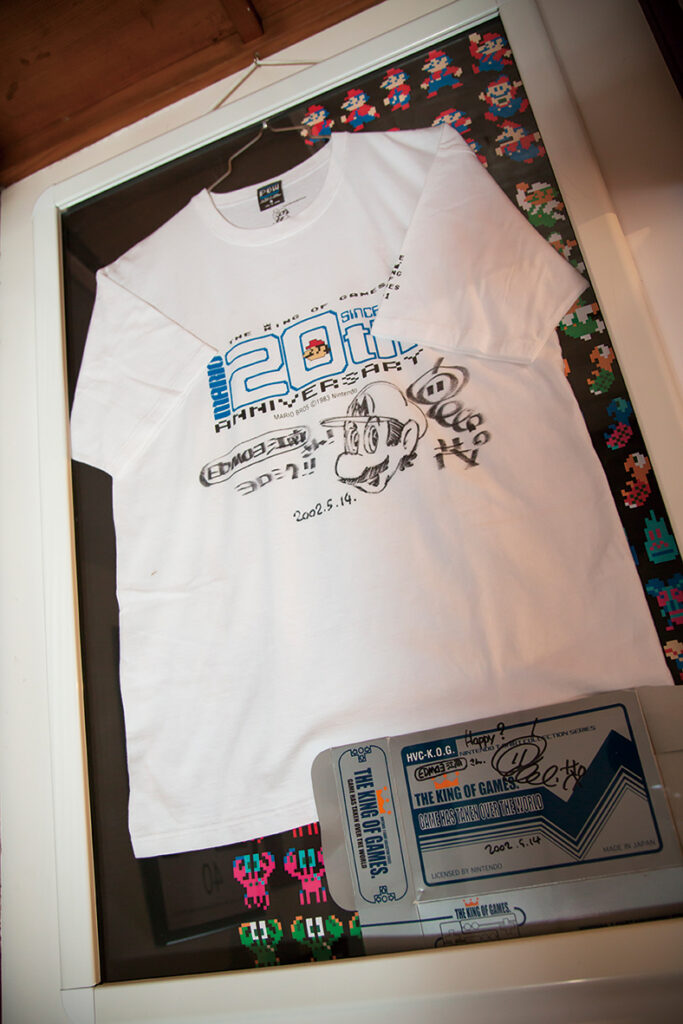
There is something that Enami has kept in mind ever since his first designs. “When I was a child I felt this incredible excitement whenever I played with my Game & Watch or Famicom. I still have it. That feeling I had when clutching my pocket money, I would run down to the toy store and stare at the games in the showcase for hours.”
Enami has always been fascinated by every aspect of video game design, from the game consoles, to packaging and even the logos. “I want to keep forever that sense of shimmering wonder I had in childhood, and I want others to be able to feel this too, through my designs.” When asked how he holds on to this feeling, even as an adult, Enami is forthright. “Even now, whenever a new game is released, I’m all over it. You can’t lose the sense of playing the game as a fan.” “My career really began from this playful childhood dream of mine, I guess,” he adds, sounding more than ever like an excited little boy.
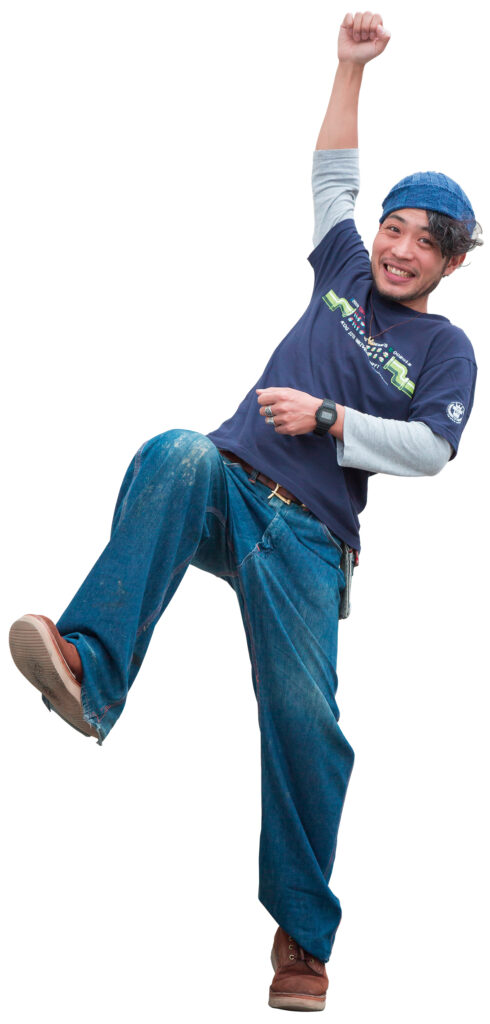
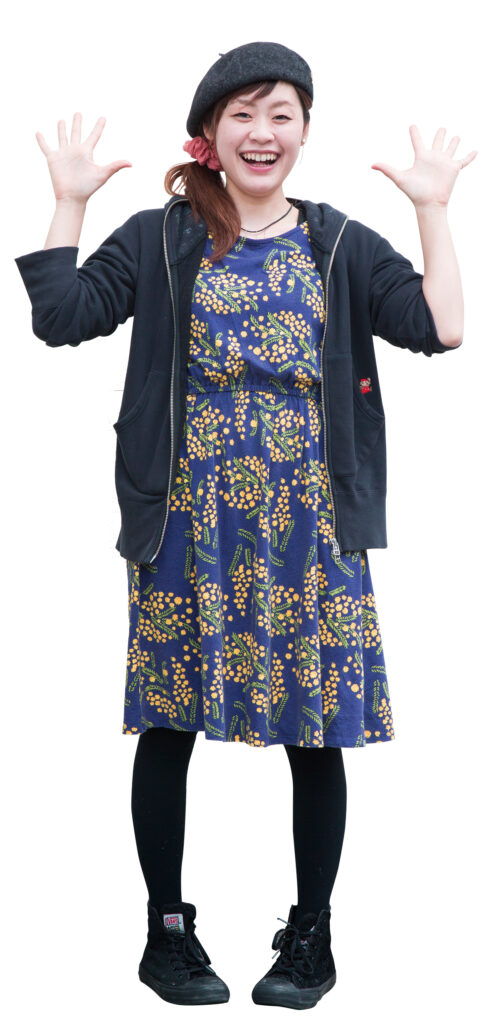
Born in 1988 in Osaka Prefecture, Chikano is Editmode’s photographer and PR agent, who also designs and runs the company website. She first heard about Editmode in a class on video games at university, and was interested in the idea of creating original products in Kyoto with a small yet dynamic team of like-minded people. Chikano asked for an interview, got a job, and has been with the group ever since. An accomplished artist herself, she also enjoys puzzles and riddles. *No longer at Editmode
Just like a toy box
Editmode’s products are all created with a keen sense of fun
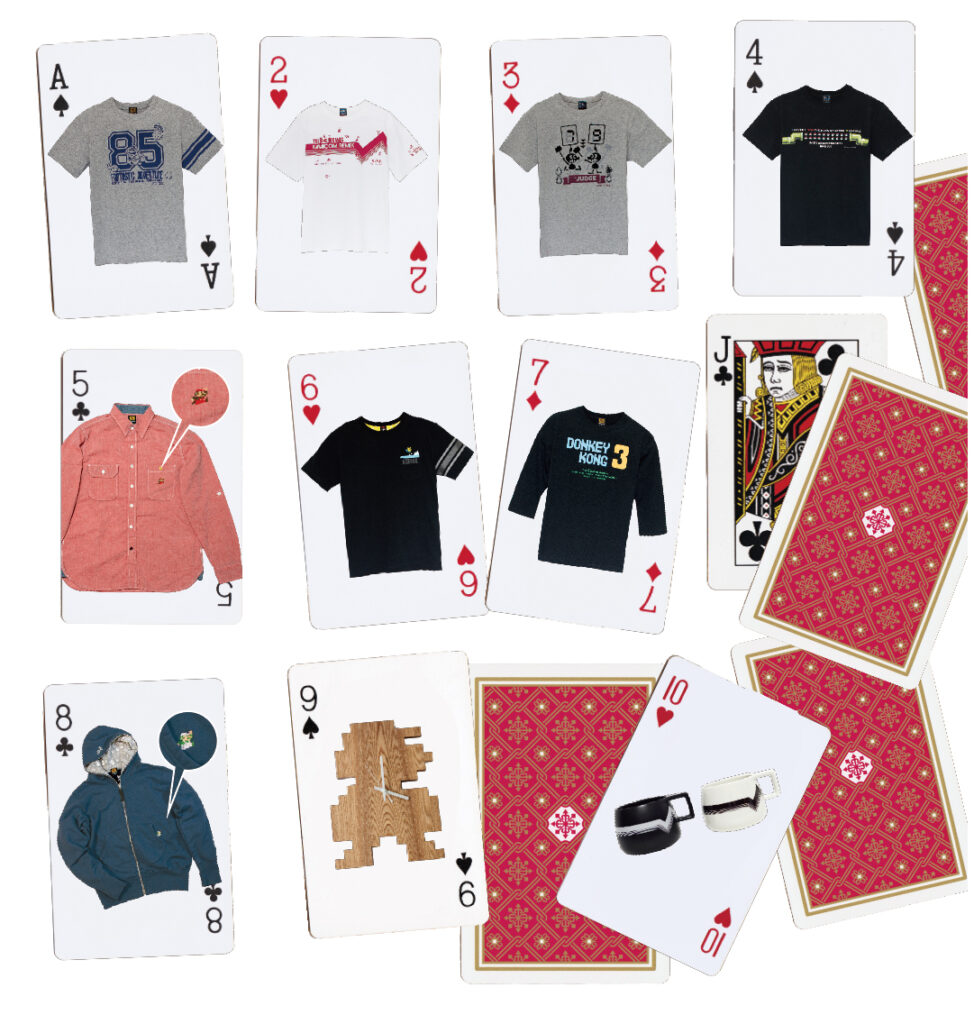
[♠A] Super Mario Bros. Mario Numbering 4,937yen
[♥2] Famicom Remix Line T 5,292yen
[♦3] Electronic Pocket Judge (Gray) 6,171yen
[♠4] Mario 20th Anniversary Pipe 6,264yen
[♣5] Chambray Shirts Super Mario Bros. (Red) 14,904yen
[♥6] Pokemon 1point-T/Aerial (Black) 6,994yen
[♦7] Donkey Kong 3 Trilogy Ver. (Longsleeve) 5,966yen
[♣8] Super Mario Zip Hoodie (Blue gray) 15,000yen
[♠9] Mario Clock 24,000yen
[♥10] KOG Coffee Cup 2,980yen
Store Site
https://shop.editmode.jp (Japanese language only)
Creating in Kyoto, the home of artisans.
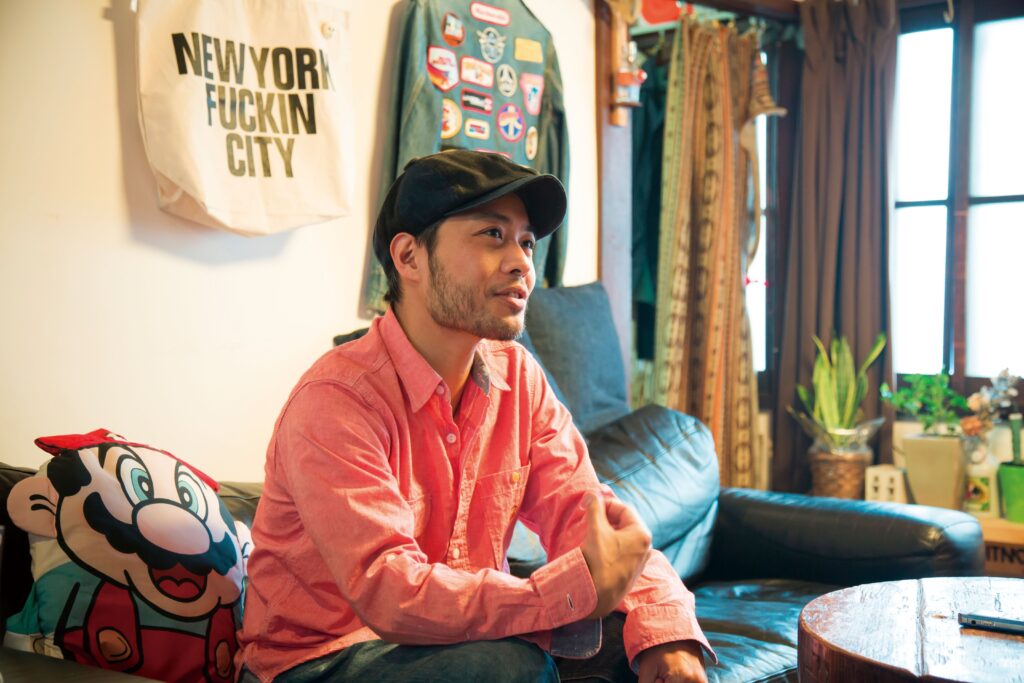
These days Nintendo is such an enormous brand worldwide in video games that it needs no introduction. Though its probably less known that Nintendo was established in Kyoto, and still has its world headquarters here. The city is home to many businesses such as confectioners, pickle shops, or traditional craft stores that date back 300 or even 400 years, and at the other end of the spectrum, is home to a number of companies boasting cutting-edge modern technology such as Kyocera, Rohm and Omron. What all of these Kyoto enterprises have in common is an adherence to quality manufacturing. The city has been a center of craftsmanship since ancient times, and Enami’s company Editmode might be seen as the latest generation of a long and celebrated family line.
As mentioned earlier, The King of Games brand began in 2002, as a brand within the Kyoto apparel store Loftman. After a time, Enami and two other staff members quit Loftman to establish their own company which they called Editmode, to continue The King of Games brand. The company moved to its current office, an historic machiya townhouse in downtown Kyoto, in 2007. At the time, Enami and co. were not looking for something particularly historic; they simply wanted an office/warehouse with plenty of space. The place they found was a beautiful machiya storeroom dealing in thread, which dates from 1872. Editmode’s office and warehouse on the second floor was formerly the thread warehouse, while the thread company still has its offices on the first floor. The entire space is entirely unrenovated, and so is keenly evocative of times past. It’s rather an odd match- the video game products against dark polished wood and traditional fittings- but it makes for an interesting and fun space. It feels like a neighborhood hangout, where local friends would gather to play games and relax. Enami is happy to be here. “Of course, we love this place. I never get tired of old places like this, and it grows on you more and more, as you clean and maintain it.” He adds that since moving to the machiya he’s found a new level of focus in his work.
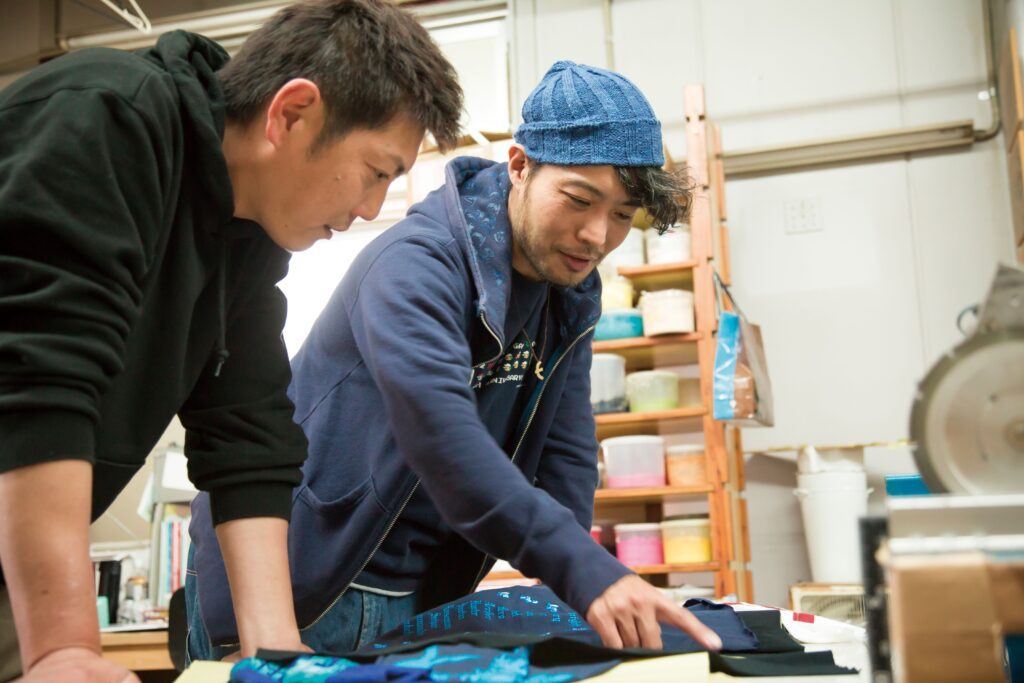
On top of this, there’s the appeal of the nearby area, an oft-overlooked part of Kyoto called Gojō. “It’s a cool mix in this area- there are little shopping arcades, businesses and homes. And amongst that are a number of warehouses and machiya like this one. It’s a part of town where all kinds of people pass through. I really feel that places like this are great for creating and crafting.”
Asked what he loves most about Kyoto, Enami is quick to answer. “Everything is within easy reach. Interesting people, places, things- they’re all close by, and it’s possible to sense a variety of things at once. Connecting with a variety of people, making quality products. That’s what this place means to me.”
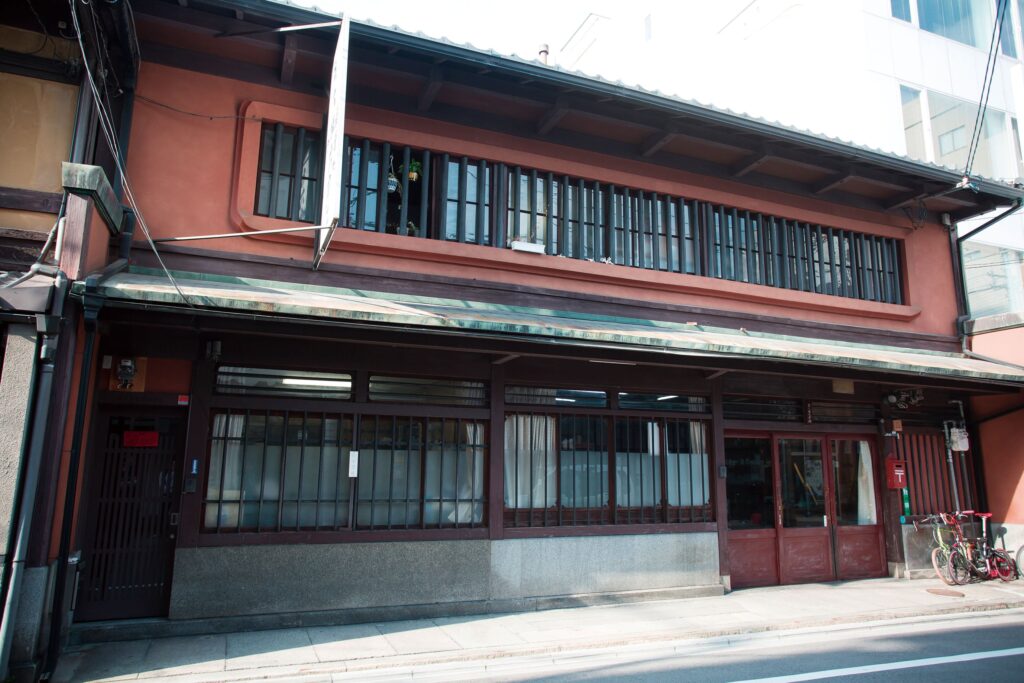
Editmode has no actual store, instead selling all of its products through its website. Though we’re now in an age in which buying, selling and distribution is possible at the click of a mouse, Enami wants his customers to feel the same sense of excitement as they did playing video games in their youth. That’s why, in this age of mass-produced, pre-made products he’s passionate about creating one-of-kind treasures, things that make someone happy the moment they open the box. “I want to create unique, interesting products that someone can buy wherever they are in the world, but only from here.”
Enami has a powerful ally in his quest to make extraordinary products. Takanori Miyazaki is the owner of the screen-printing factory that prints and processes all of Editmode’s designs. He’s an Enami’s indispensible partner when it comes to bringing ideas to life.
Miyazaki’s factory prints fabric in the same way that woodblock prints are put onto paper; one color at a time. Each print is applied carefully and precisely by hand, using traditional techniques still used in Kyoto.
Every piece has a unique look, based on the relationship between color of the pigment dye and the color of the fabric. This is especially the case for Enami’s detailed dot-pixel designs, where depending on the layout and pallet, colors can blend and change, just like an optical illusion. A digital print can give results closest to the desired colors, but Enami and Miyazaki don’t want to rely on simply that. First, they do a test print using the color mixed closest to Enami’s design. Once they have seen it on the fabric, they then carefully adjust the color balance of the pigments to find the perfect color. This is an exacting and time-consuming process, sometimes taking many turns to perfect.
Being the same age, Enami and Miyazaki are lucky in that they share a worldview and general aesthetic. This also means that they are able to express their ideas and opinions freely- so freely that they often butt heads. “Yeah, we argue quite a lot,” admits Miyazaki. “I guess I do ask some impossible things at times, but then he is able to make different proposals from the artisan’s point of view, too.” The designer and the artisan, each with unshakable pride in their work, share a joy in being able to create quality products in the space their respective areas of expertise overlap. It’s as if their bond is governed by a strict set of professional guidelines like an artisan’s guild of two.
Miyazaki was born in Kyoto into a family of silk artisans. His work with Enami can be seen as the latest addition to the long list of traditional crafts developed and nurtured in Kyoto, and a bridge to further innovation. Perhaps teir hand-printed t-shirts will be considered ‘traditional Kyoto crafts’ in 100 or even 1000 years’ time.
Let’s take a closer look at just how the prints are made.
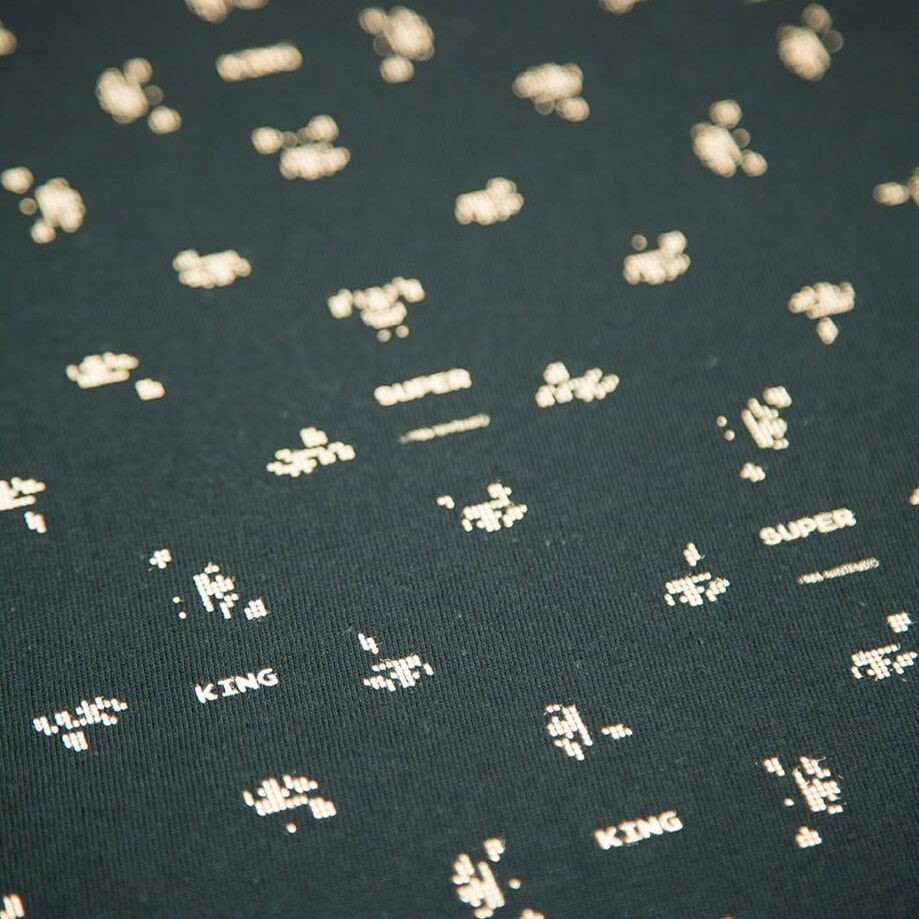
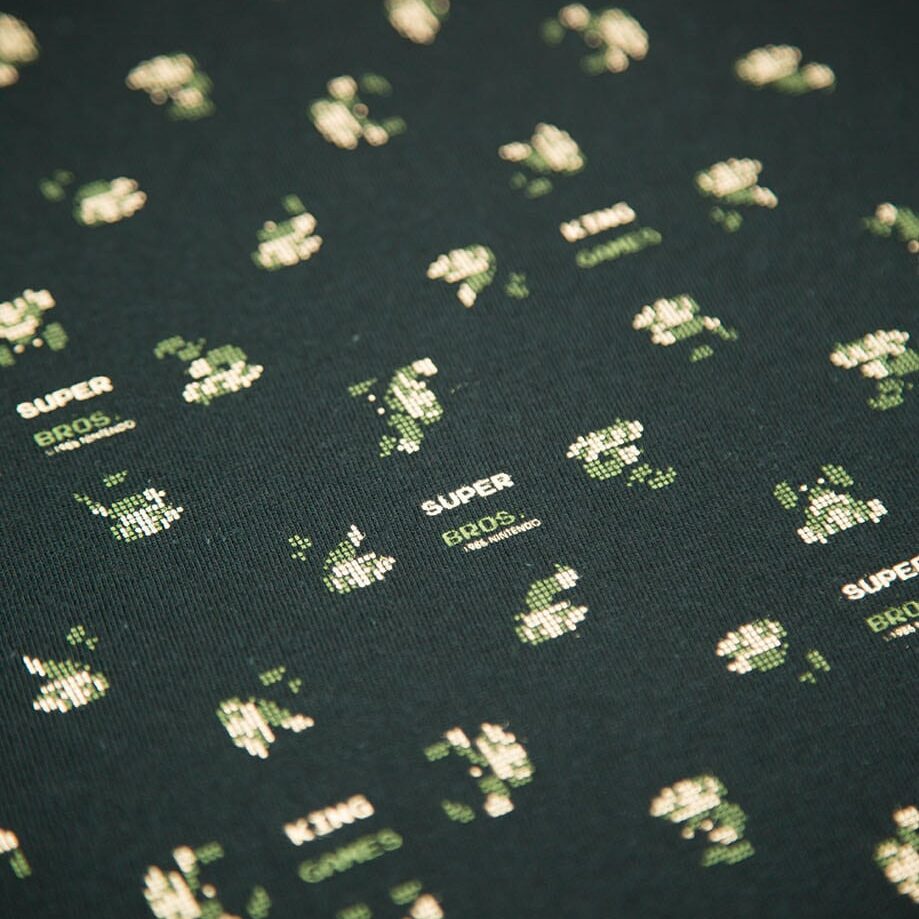
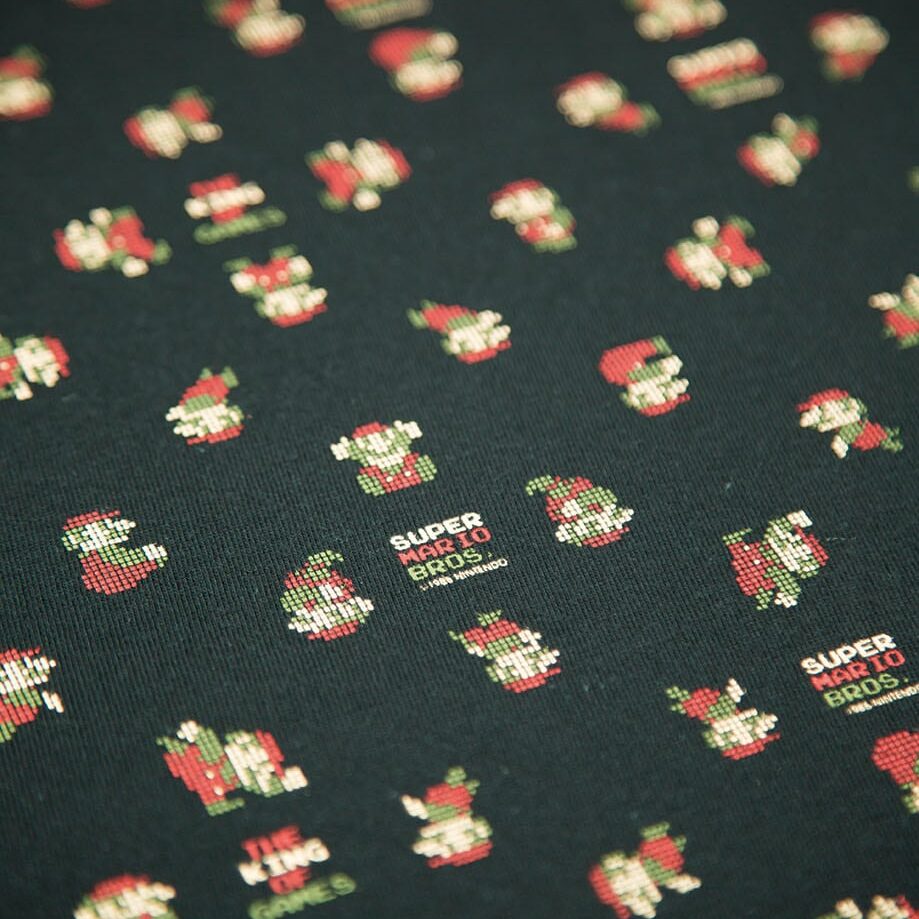
stage 1
Here’s the first layer- the basic pattern put down in white. At this point it’s hard to make out just what it is.
stage 2
Next, green is added to the design. It’s starting to look a little like Mario.
stage 3
Finally, a red screen print is added, and our Mario pattern is complete.
Editmode’s designs on the future.
Finally, Enami outlines what the future might hold for Editmode. “Since we’re an online retailer, I’d like to hold sales events where people can actually pick up or try on our products, at least yearly. As well, we’re updating our English website, so we hope to start selling more of our stuff abroad, and maybe even one day hold an overseas event.” Enami hints that he’s already got ideas for a limited-release item for their international event. “I’d love to do a game character collaboration with other traditional Kyoto artisans, such as Kiyomizu-yaki pottery. I think that a lot of people, in Japan and overseas, would be curious to see traditional techniques and designs updated with contemporary ones,” he says modestly, outlining his grander ambitions.
He’s also positive about the future of Editmode’s licensing with Nintendo. “Now that character licensing has become a business, my guess it that we’ll be seeing more of characters like Mario or Pokemon. But in spite of this, we don’t think that anything should be radically changed. Why not? Because sticking to the formula that’s worked for you up to now can also be a way of differentiating yourself from the pack. Our specialty is making limited-run items using original fabrics, hand-printed designs, and specialized assembly techniques. These things are impossible for a large-scale company to achieve. So in a way, the more these mass-produced items make it onto our shelves, the more Editmode’s quality and design stands out. It’s a good thing for us, really,” he laughs.
This is perhaps the same line of thinking as traditional Kyoto artisans; an adherence to making quality, long-lasting items, without being blown around in the gusts of passing trends. “Consumers are becoming more and more individual in their tastes. But by creating unique, high-quality products, we believe we can tap into something, and gradually increase the number of people who appreciate such things,” Enami asserts, with his 15 years of experience in the field, as pioneer licensee, as designer, and now as entrepreneurial role model, to back him up.


